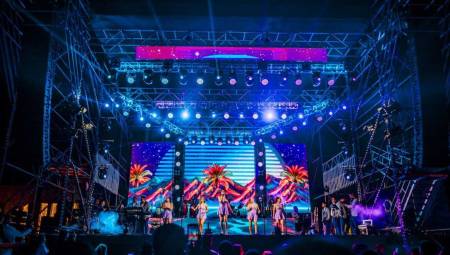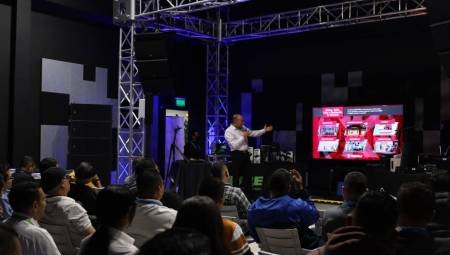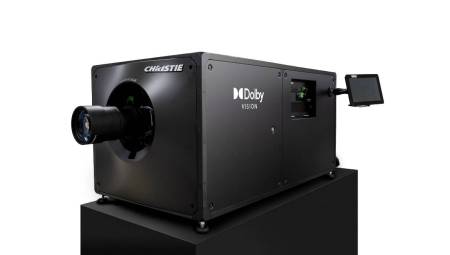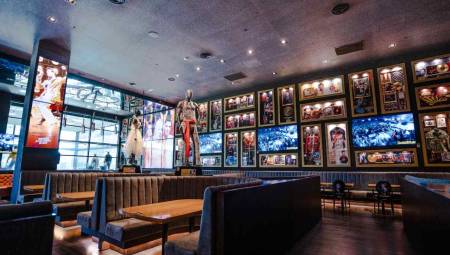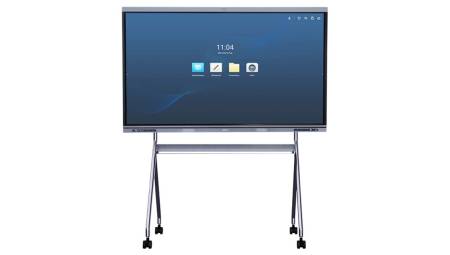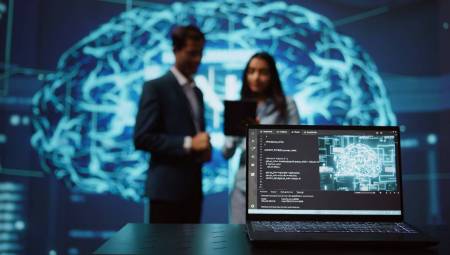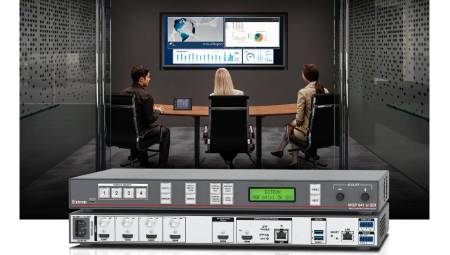 Dominican Republic. With 22 classrooms and a telepresence room, the new 12-story building of the Faculties of Health Sciences and Sciences and Engineering of the Pontificia Universidad Católica Madre y Maestra (PUCMM) of the Dominican Republic, was designed to provide an active learning environment and problem-based teaching, delivered through the latest AV technologies.
Dominican Republic. With 22 classrooms and a telepresence room, the new 12-story building of the Faculties of Health Sciences and Sciences and Engineering of the Pontificia Universidad Católica Madre y Maestra (PUCMM) of the Dominican Republic, was designed to provide an active learning environment and problem-based teaching, delivered through the latest AV technologies.
To fulfill PUCMM's vision, Santo Domingo-based integrator Musitempo equipped the building's classrooms with Optoma W316ST short-range projectors and Da-Lite projection screens. The telepresence room features 40- and 70-inch Samsung LED screens, a Shure DIS discussion system, and Vaddio RoboSHOT cameras. Video sources are distributed in classrooms and the telepresence room through Atlona's video arrays. Audio is provided by Soundweb London's network audio systems.
A key element in equipping classrooms and telepresence rooms with this high-end AV equipment was to provide teachers and students with an easy way to control it. The university wanted to be able to power components and select fonts at the touch of a button, while allowing for easy switching on the fly. Budget was also a concern, so these capabilities had to be delivered by a cost-effective solution. To meet both requirements, Musitempo turned to RTI.
"We have been a distributor and integrator of RTI for over a decade and we knew they had the right solutions for this project, in terms of price and functionality," said Fernando Hernandez Voigt, CTO and Project Engineer at Musitempo.
Based on a combination of IP, RS-232, relay and IR controllers, RTI systems in classrooms and telepresence room are powered by RTI's XP-8s and XP-6 control processors, respectively. Students and teachers interact with the systems using keyboards and touch screens located in all spaces. Classrooms feature a total of 19 RK1 wall keyboards + 8 buttons, two 2.8-inch KX2 wall touchscreens and a 7-inch KX7 wall touchscreen, while the telepresence room features two 7-inch KX7 wall screens touchscreens.
"RTI has perfectly met the university's requirements for simple yet powerful control on a tight budget," said Fernando Hernandez Voigt. "In addition, compared to the other buildings in the university, the new control system has greatly increased efficiency, leaving more time for learning."





